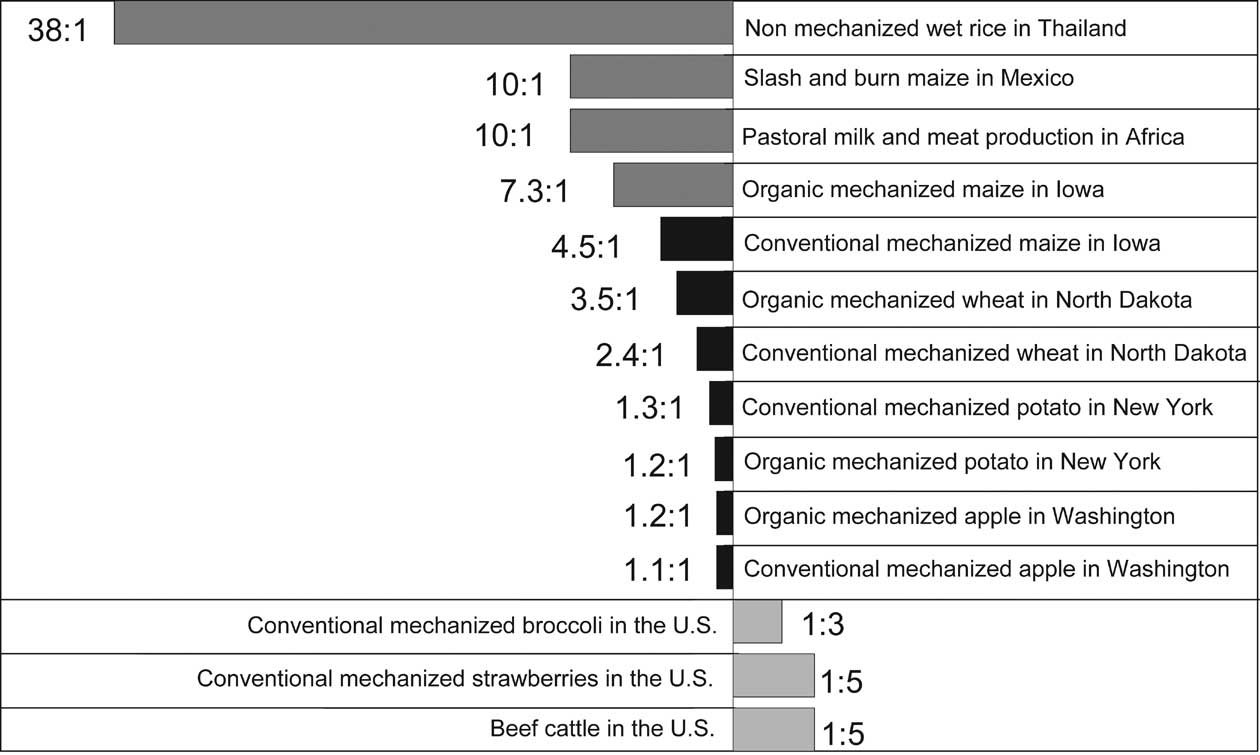
| Previous | Return to table of contents | Search Reports | Next |
| « Back to weltagrarbericht.de | ||
Agriculture in Latin America and the Caribbean: Context, Evolution and Current Situation | 51
|
is substantial and dates back to the 1970s (Trenbath, 1976; Beets, 1982; Francis, 1986; Vandermeer, 1989). Among the facts that have been identified as responsible for these advantages are the more efficient use of resources (nutrients and water) and the reduction in the incidence of pests and weeds (Vandermeer, 1989; Gliessman, 1998). The greatest advantages of multicropping are obtained when gramineous and leguminous species are combined, as these two plant groups tend to complement one another very well (Vandermeer 1989). Other combinations may not be as advantageous from the standpoint of yields (Vandermeer, 1989). Producers who practice multicropping have multiple survival strategies and combine subsistence agriculture with commercial activities and wage labor (Ewell and Merrill- Sands, 1987; Barrera-Bassols and Toledo, 2005; Deere, 2005). Despite the trends towards intensification of agriculture in LAC, traditional/indigenous agriculture is still practiced by millions of producers. As of 1980 such systems of production were found in 16 million productive units and used 160 million ha, involving some 75 million people, i.e., almost two-thirds of the rural population of LAC (Ortega, 1986). In the 1980s this sector produced 41% of the food for domestic consumption and was responsible for producing 51% of the maize, 77% of the beans and 61% of the potatoes (Posner and McPherson, 1982; Altieri, 1993). Due to neoliberal policies, this sector has been weakened and it is possible that today it accounts for a lower percentage of domestic food production (David et al., 2001). The traditional/indigenous system is also characterized by favorable rates of output per unit of energy input. For example in slash-and-burn systems (swidden agriculture), which depend on manual labor in the mountains of Mexico, estimated yields were 1,940 kg per ha, with a rate of energy efficiency (unit output per unit input) of 10:1 (Pimentel and Pimentel, 1979; Altieri, 1999). In Guatemala a similar system generated a rate of energy efficiency of 4.8:1 and when |
one adds fertilizer and pesticides, the yields increase (from 5 to 7 tonnes per ha), but energy efficiency drops to less than 2.5:1 (Altieri, 1999) (Figure 1-12). Conventional/productivist agriculture. The emphasis of the conventional/productivist system has been on maximizing productivity and profit. In this regard, there is no doubt but that the conventional/productivist system has been a success for those producers who have enough capital to implement it. This system has been extending throughout the region, as the AKST system has assigned it high priority. For example, the hybrid varieties of maize developed by CIMMYT in Mexico were planted on 10.6 million ha, accounting for more than 36% of the total area planted in maize throughout the region; more than 74% was planted with some hybrid variety (Morris and López-Pereira, 1999). It's hard to know how much of this was produced under the conventional/ productivist system, since many producers, who use the traditional system, also incorporate hybrid varieties. The main objective of the Green Revolution was to increase the yields of the main food crops per unit of area. Contrary to the perception that the Green Revolution brought about a sharp increase in yields in the late 1960s, Evenson and Gollin (2003) argue that the Green Revolution has taken place in the long run, through the successive development of improved varieties. These authors divide the Green Revolution into two stages, early (1961-1980) and late (1981-2000) and argue that in the developing countries, including LAC, improved varieties contribute to a 17% increase in yields, while in a later period these varieties contributed to 50% of the increase in yields. Notwithstanding these figures, the rate of increase in yield has been diminishing in the last 10 years (Evenson and Gollin, 2003). The advocates of biotechnology argue that the only way to continue to increase yields is by the use of transgenic crops, which have been called "the new Green Revolution" |

Figure 1-12. Energetic efficiency of different production systems. Source: Authors' elaboration based on data from
: Atkins, 1979; Pimentel, 1980; Pimentel et al., 1983; Reganold, 2001.
| Previous | Return to table of contents | Search Reports | Next |
| « Back to weltagrarbericht.de | ||